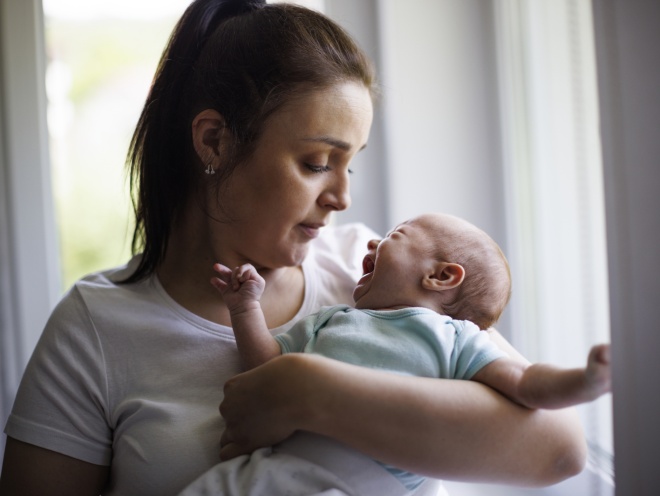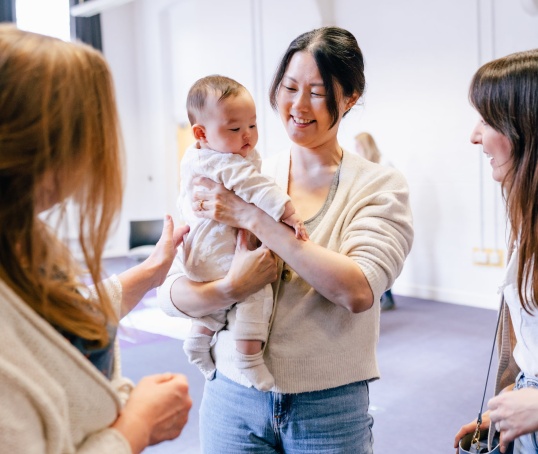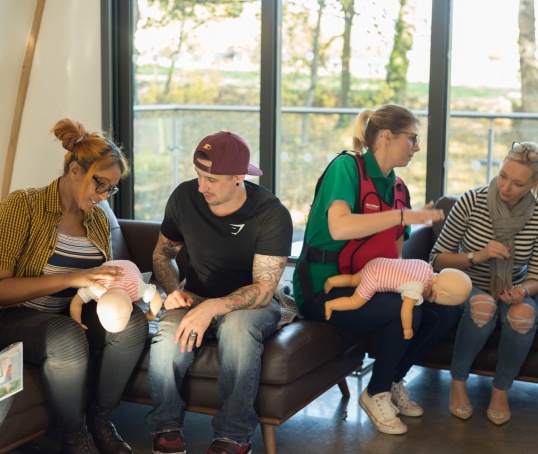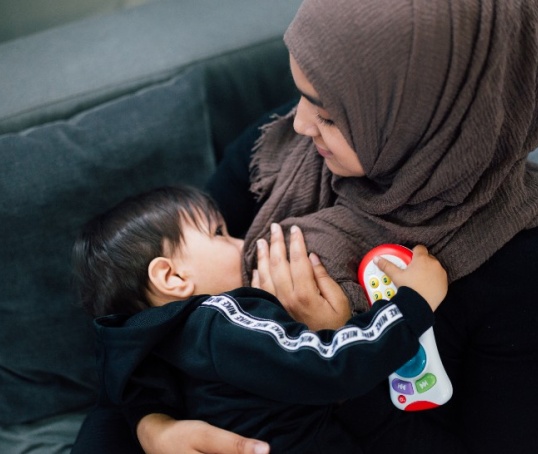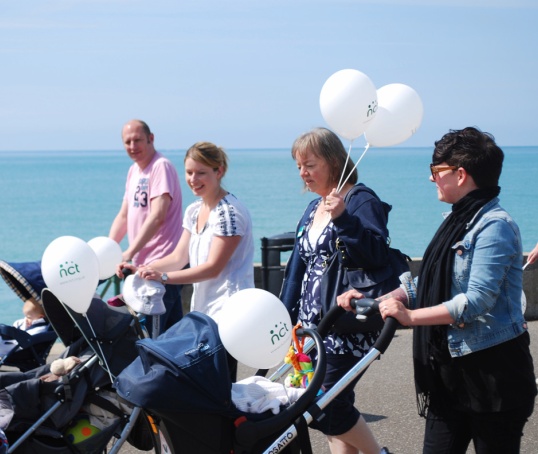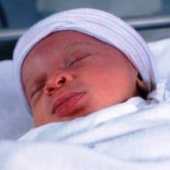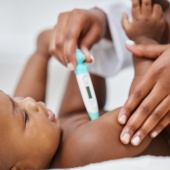It can be hard to tell if a newborn baby is seriously ill because they can’t tell you what’s wrong. Here’s how to know when to call the GP…
Most babies and young children will pick up colds or minor infections at some point. But it can be difficult to tell if your newborn baby has something more serious.
One of the main bits of advice is to trust your instincts. You know what’s usual for your child and may be able to tell early on if they are very ill. If you aren’t sure whether you’re right to be concerned, always ask your doctor (NHS, 2020).
When to call the GP, 111 or 999?
|
When to call 999? If your baby is seriously ill and needs emergency medical help, call 999 for an ambulance. For example, if your baby:
(NHS, 2019, 2020a,b; Meningitis Now, 2018; NHS, 2018) |
GP surgeries are open from Monday to Friday but if you can’t get through to your doctor’s surgery or if you have an urgent medical concern, call NHS 111, who may be able to get you an out-of-hours appointment.
GPs can choose whether to provide 24-hour care for their patients or to transfer responsibility for out-of-hours services to NHS England, which is responsible for providing a high-quality service for the local population.
But this can mean different areas can have slightly different services.
You can also visit an urgent care service, such as an NHS walk-in centre, urgent care centre or minor injuries unit (NHS, 2018).
In a medical emergency, call 999.
Here’s when to get help for your baby’s temperature and other signs and symptoms…
Call your GP immediately or NHS 111 if it’s an evening or weekend explaining your baby’s age and symptoms if:
- your baby is younger than three months old and they have a temperature of 38°C (101°F) or higher
- your baby is three to six months old and has a temperature of 39°C (102°F) or higher (read more in our article about what to do if your child has a temperature)
- your child has a fever that has gone on for longer than five days
- they have a high temperature yet their feet and hands are cold, or ibuprofen or paracetamol don’t reduce their temperature
- their breathing is rapid, throaty or difficult, or they’re panting
- you think your baby may be dehydrated – read about the signs of dehydration here
- your baby has other signs of being unwell, such as being off colour (eg pale), refusing to feed and they’re under eight weeks, green vomit, or drowsiness and confusion
- they are crying non-stop, they have a high-pitched or unusual sound when crying, or the cry doesn't sound like their normal cry
- you are worried about your baby - trust your instincts if you think they could be seriously ill
- you’re concerned about your baby, they’re not eating and they’re not themselves
- your baby's health is getting worse or you have concerns about looking after them at home.
(NICE 2019; NHS 2020b, 2019, 2020c)
What if my GP surgery or health centre is closed?
If you call your GP and it’s closed, you might be directed to call an out of hours service. There will be a phone number for out of hours service on your GP surgery’s answerphone. They can sometimes arrange a walk-in appointment for you to get your baby seen fast (NHS, 2016c, 2017a). You can also call 111…
When to call 111 for your baby?
- If you aren’t sure who to call for medical help and there is no immediate threat to life, you can call 111 to speak to a medical advisor.
- Call 111 if you want to check whether you need to go to A&E or another urgent care service.
- NHS 111 has an information website as well as its advice line.
(NHS, 2012, 2020b, 2017c)
The health advisor at 111 will ask you questions about your child’s symptoms. Based on your answers, they will advise you whether you can care for your child at home or whether they need to go to an out-of-hours centre or hospital, or to the GP practice (NHS, 2012, 2016b, 2017c).
When to take your baby to A&E?
If your baby needs immediate treatment for an illness or injury that's not life-threatening, you might need to take them to A&E. For example, if your baby:
- has a fever that persists even after you've given them paracetamol or ibuprofen and especially if they are floppy and drowsy (NICE, 2019).
- has an object firmly lodged in their nose or ear. Don't try to remove it yourself, as you don’t want to push it further in (St John's Ambulance, 2021). There is no good evidence on the best way to remove a foreign object, so keep your child calm and contact health professionals who understand the risks, have the appropriate tools, and can provide pain relief (Oyama, 2019).
If you’re really concerned about your newborn baby’s health always trust your instincts and seek urgent medical advice (NHS, 2017a).
This page was last reviewed in April 2021.
Further information
Our support line offers practical and emotional support with feeding your baby and general enquiries for parents, members and volunteers: 0808 599 1143.
You might find attending one of our NCT New Baby courses helpful as they give you the opportunity to explore different approaches to important parenting issues with a qualified group leader and other new parents in your area.
Make friends with other parents-to-be and new parents in your local area for support and friendship by seeing what NCT activities are happening nearby.
If you need medical information fast and your doctor’s surgery or centre is closed. Go to https://111.nhs.uk/ or call 111. In a medical emergency always call 999.
Information from NHS Choices on how to treat a fever, leaflet about the NHS 111 service, more about when to call 999.
More information about meningitis from NHS Choices and the signs and symptoms of meningitis from Meningitis Now.
St John’s Ambulance (no date) Object in ear or nose – baby or child. Available at: https://www.sja.org.uk/get-advice/first-aid-advice/minor-illnesses-and-… [Accessed April 2021]
Meningitis Now. (2018) Signs and symptoms. Available at: https://www.meningitisnow.org/meningitis-explained/signs-and-symptoms/ (accessed 1st September 2018)
NHS. (2012) 111 – The new NHS number. Available at: https://www.nhs.uk/NHSEngland/AboutNHSservices/Emergencyandurgentcareservices/Documents/2012/NHS%20111%20Easy%20Read%20leaflet.pdf (accessed 8 April 2021)
NHS. (2019) Meningitis. Available at: https://www.nhs.uk/conditions/meningitis/ (accessed 8 April 2021. Last reviewed 8 March 2019)
NHS. (2020b) Fever in children. Available at: https://www.nhs.uk/conditions/pregnancy-and-baby/treating-high-temperature-children/ (accessed 2 April 2021)
NHS. (2018) NHS out-of-hours services. Available at: https://www.nhs.uk/using-the-nhs/nhs-services/urgent-and-emergency-care/nhs-out-of-hours-services/ (accessed 8 April 2021)
NHS. (2020c) Is your baby or toddler seriously ill? Available at: https://www.nhs.uk/conditions/pregnancy-and-baby/spotting-signs-serious-illness/ (accessed 8 April 2021)
NHS. (2019) Dehydration. Available at: https://www.nhs.uk/conditions/dehydration/ [Accessed 8 April 2021]
NHS. (2017c) NHS 111. Available at: https://www.nhs.uk/using-the-nhs/nhs-services/urgent-and-emergency-care/nhs-111/ (accessed 1st September 2018)
NHS. (2018) NHS out-of-hours services. Available at: https://www.nhs.uk/using-the-nhs/nhs-services/urgent-and-emergency-care/when-to-call-999/(accessed 8 April 2021)
NICE. (2019) Fever in under 5s: assessment and initial management. Available at: https://www.nice.org.uk/guidance/cg160 (accessed 1st September 2018)
Oyama LC. Foreign Bodies of the Ear, Nose and Throat. Emerg Med Clin North Am. 2019 Feb;37(1):121-130. doi: 10.1016/j.emc.2018.09.009. PMID: 30454775.
